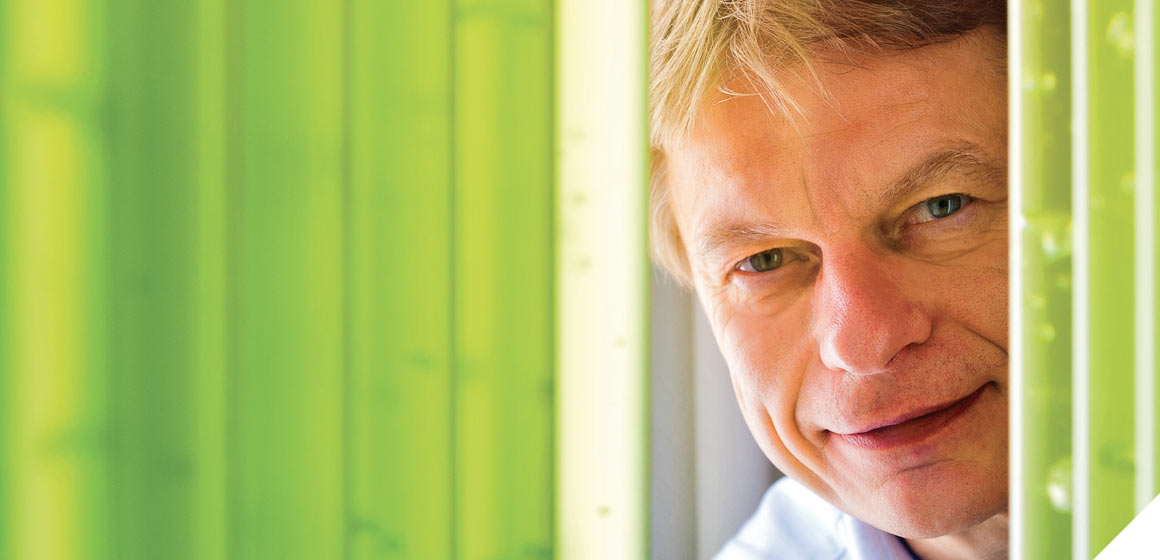 Monday 3 February 2014 11:02am
Monday 3 February 2014 11:02amOtago scientists are manipulating the process of photosynthesis to find new and renewable sources of energy.
Pond scum could be the next big thing in renewable energy sources.
Researchers led by Professor Julian Eaton-Rye (Biochemistry) are investigating the potential of producing alternative fuels and other products by manipulating photosynthesis, the process by which plants use sunlight to turn the carbon dioxide they breathe and the water they drink into the oxygen we breathe and the sugar they and, ultimately, we feed on.
One area of the research involves genetically modifying cyanobacteria (commonly known as blue-green algae or pond scum) to produce biofuel.
Eaton-Rye says they have taken genes from an organism called Clostridium, which naturally produces butanol – a form of alcohol – and put the genes into cyanobacteria, which tricks them into producing butanol rather than sugar.
"Butanol has the great advantage that it's a direct fuel substitute – you can pour it into the petrol tank of your car and run the engine." It's currently produced commercially from non-renewable fossil fuels.
"It's futuristic stuff but, if you succeed, then you have sustainable, pollution-free energy coming from water, which would be a great asset."
"We have had some success in producing butanol in the laboratory, but our yields are not high enough. So the next step is to work out how to increase the amount of butanol you get. We think that we will probably use a different cyanobacteria that grows much faster to see if we can produce a high-yielding source of butanol."
He says that, in commercial production, the cyanobacteria would live in huge vats of fresh water or sea water that were covered, but allowed in light, and the butanol would be collected as a gas and then condensed into a liquid fuel.
It's been estimated that up to one per cent of New Zealand's land mass would need to be covered in vats of cyanobacteria to supply all of New Zealand's current fuel consumption; the equivalent of about 12 per cent of the surface of Australia would be needed to satisfy the world's current demand.
Eaton-Rye says this would be much more efficient that making ethanol from crops such as sugar cane. "If you go that route you have to grow a lot of biomass and, to do that, you have to use a lot of land that could be better used to grow food."
In addition to making butanol from cyanobacteria, Eaton-Rye says it's possible to divert the production of sugars into molecules that can be used for the manufacture of products such as rubber, adhesives and perfumes, traditionally produced by the petrochemical industry.
Much of the research work to date has been undertaken by a former PhD student, Dr Ryan Hill. Other researchers overseas are working on similar projects and have encountered similar problems with low yields.
Eaton-Rye says another approach is to produce hydrogen as a fuel directly from water. He says this research centres on the first stage of photosynthesis, in which an enzyme called "Photosystem II" breaks water molecules into oxygen and hydrogen, which the plants use to produce electrons that make carbon dioxide turn to sugar.
"The trick of Photosystem II is that it can break water molecules down at ambient temperatures, whereas if you wanted to do this you would have to heat the water to about 2,000°C.
"The long-term goal of this research is to understand how the plant is able to do this and then to build synthetic molecules to mimic this process. You would then simply shine light on water in the presence of your photosynthesis-inspired catalyst to produce hydrogen.
"It's futuristic stuff but, if you succeed, then you have sustainable, pollution-free energy coming from water, which would be a great asset."
Funding
- University of Otago
- Marsden Fund